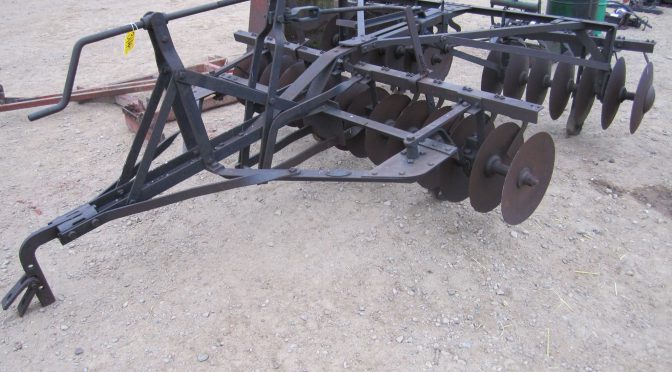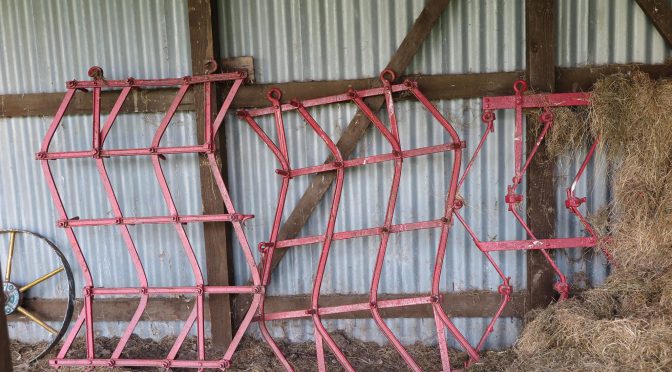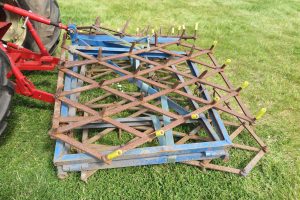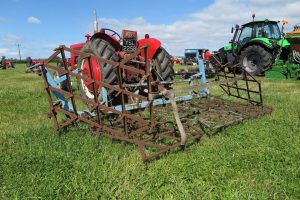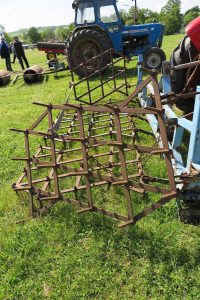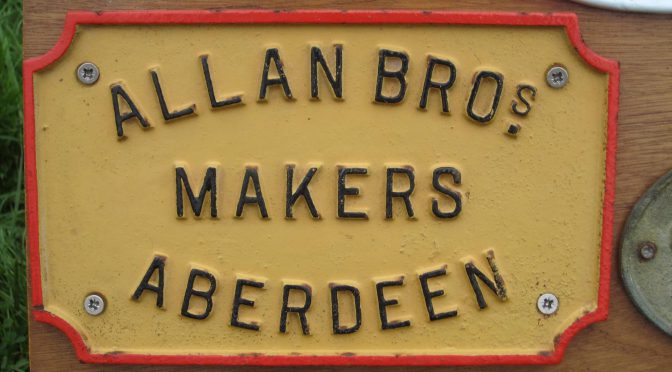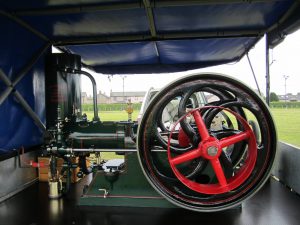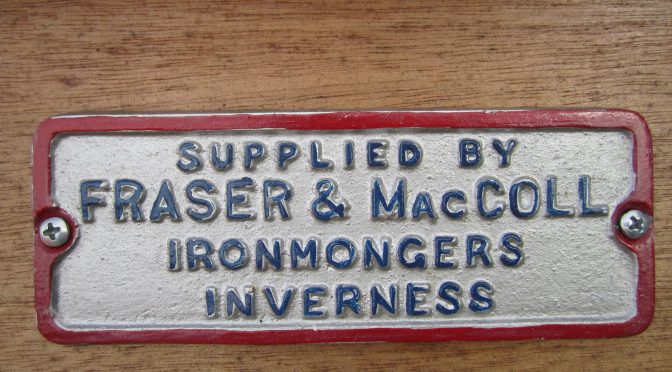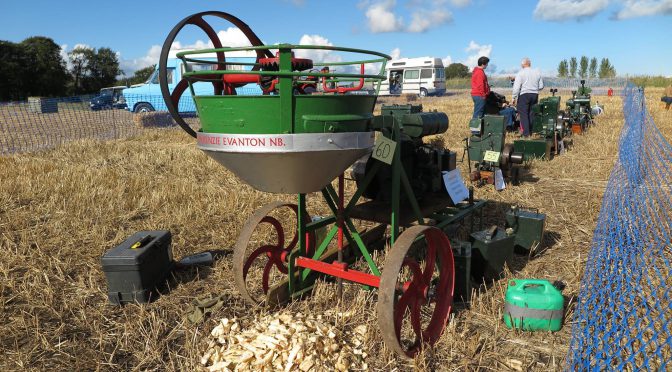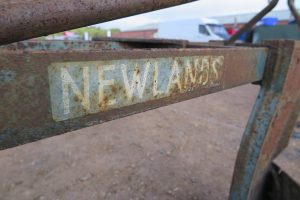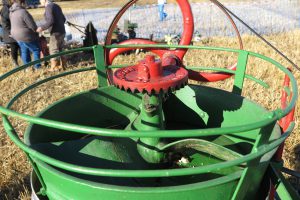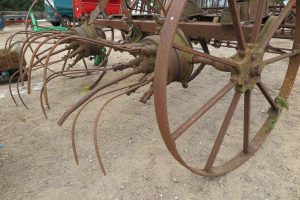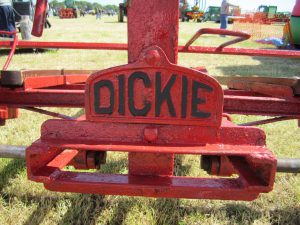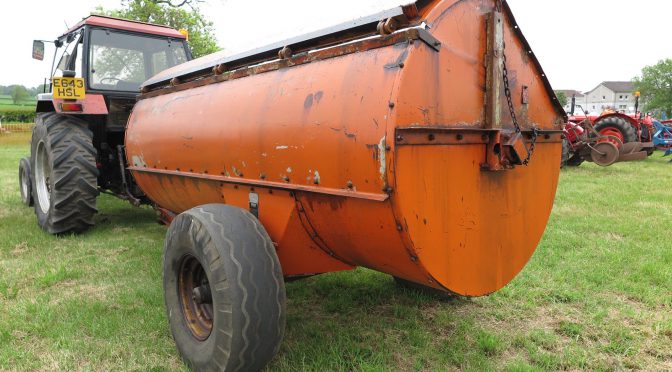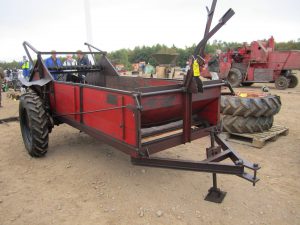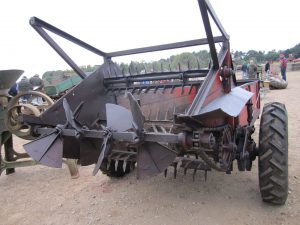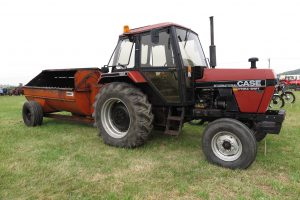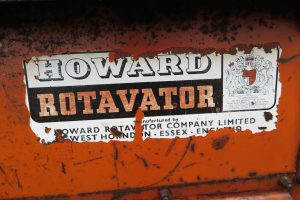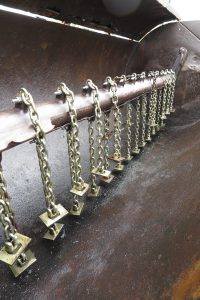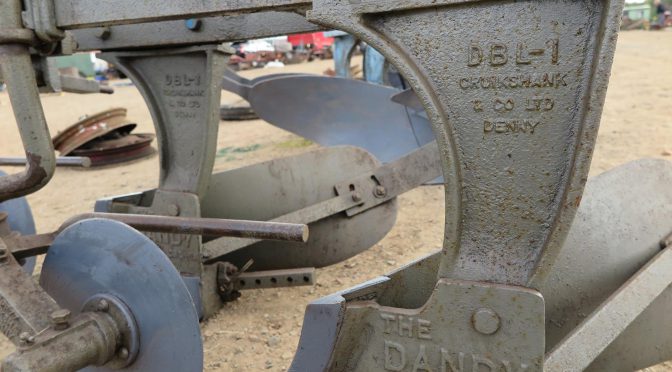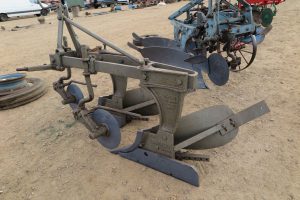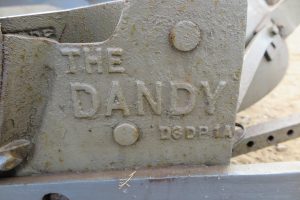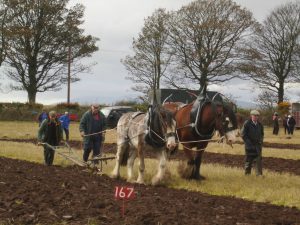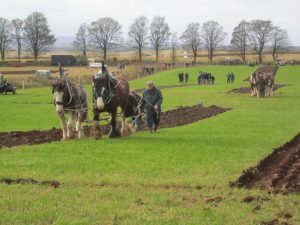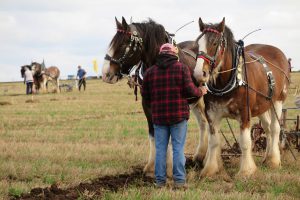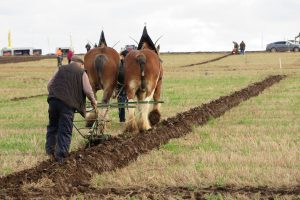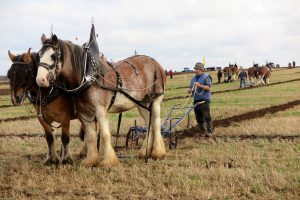In the days when the oat crop was sown by hand, high cut ploughing facilitated the sowing of the crop. When the seed was broadcast the 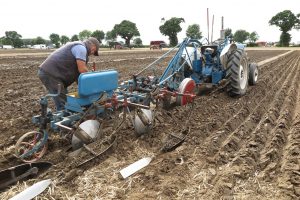 seed rolled to the bottom of the small sharp pointed furrows which were to be cross-harrowed. The cross harrowing broke down the tops of the furrows, evenly covering the seed to a consistent depth.
seed rolled to the bottom of the small sharp pointed furrows which were to be cross-harrowed. The cross harrowing broke down the tops of the furrows, evenly covering the seed to a consistent depth.
In Scotland the most noted maker of high cut ploughs was Robert Begg & Son, Implement Works, Dalry.
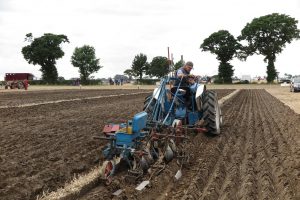 Robert Begg set up as a ploughmaker in Dalry, Ayrshire in 1864. By 1914 he could advertise in The Scottish farmer: “R. Begg, 50 years reputation, Dalry, Ayrshire”.
Robert Begg set up as a ploughmaker in Dalry, Ayrshire in 1864. By 1914 he could advertise in The Scottish farmer: “R. Begg, 50 years reputation, Dalry, Ayrshire”.
By April 1876 Robert was advertising his ploughs in the North British Agriculturist. In 1903 he described himself as an agricultural implement maker, a retail ironmonger, a smith and a smith and farrier. By 1912 he was joined by his sons, naming his business
Robert Begg & Sons. Robert died in early 1927. His business was carried on his son, John. John died by 1941 and the business was transferred to Robert Wilson, Barrhead, who continued it under Begg’s name. In 1951 the business became incorporated as Robert Begg & Sons Limited, but was out of existence by October 1976 and was dissolved in the following year.
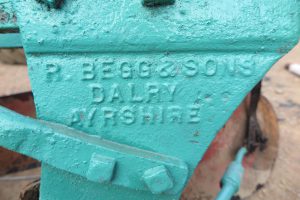 Begg’s business was associated with Sharon Street, Dalry, where it is recorded in 1886 and into at least the 1950s. From 1914 his address was the “Implement Works, Dalry.”
Begg’s business was associated with Sharon Street, Dalry, where it is recorded in 1886 and into at least the 1950s. From 1914 his address was the “Implement Works, Dalry.”
Robert Begg took an important step in developing his business in 1912 when he exhibited at his first Highland Show, held in that year at Cupar. This was the start of an association with the show that continued, more or less continuously, until 1960. Begg also took the important step of entering a plough into the Highland and Agricultural Society of Scotland’s exhibition of farm tractors and tractor implements in 1922. In following years, he also entered ploughs and other exhibits for the Society’s new implement award: in 1923, a double furrow self-lift tractor plough with self-lifting gear, and in 1928, Falconer’s patent mouldboard and Falconer’s coulter.
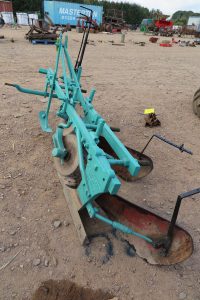 While Begg’s business changed with the times, so too did his ploughs. In 1914, Robert made a range of ploughs which included drill ploughs, double furrow ploughs, as well as bar point chill ploughs and chill ploughs. His chill ploughs were sold under the name “The Begg”.
While Begg’s business changed with the times, so too did his ploughs. In 1914, Robert made a range of ploughs which included drill ploughs, double furrow ploughs, as well as bar point chill ploughs and chill ploughs. His chill ploughs were sold under the name “The Begg”.
In 1926, Begg’s ploughs included a double furrow-self lift tractor plough, with moveable points and swivel disc coulter (sold at £36 10s), a moveable point plough, with double wheels for lea and stubble ploughing (£10 10s), chill plough, plain beam, single wheel, for lea and stubble ploughing (£9). As well as drill ploughs, he also sold baulking ploughs, diamond harrows, zig zag harrows, grubbers and drill harrows.
 In 1956 the “Begg” tractor ploughs included power lift ploughs, single furrow general purpose; power lift, double furrow, general purpose, single furrow, bar point digger, single furrow, spring-loaded bar point, three furrow general purpose and double furrow with adjustable land wheel.
In 1956 the “Begg” tractor ploughs included power lift ploughs, single furrow general purpose; power lift, double furrow, general purpose, single furrow, bar point digger, single furrow, spring-loaded bar point, three furrow general purpose and double furrow with adjustable land wheel.
Begg’s ploughs were also well-known on the ploughing match fields. For example, in 1925 it sold its “prize chill ploughs” and in 1928 and 1929 its “champion swing ploughs”.
Today, you can still see Begg’s ploughs at some of the ploughing matches and at vintage agricultural machinery rallies around the country. Ask anyone who Begg was and they will say a leading ploughmaker from Ayrshire.
The photographs of of the high cut ploughing were taken at the Scottish Ploughing Championships, October 2016 ad the World Ploughing Championships, Crockey Hill, September 2016. The photographs of the Begg plough were taken at the Scottish National Tractor Show, September 2015.
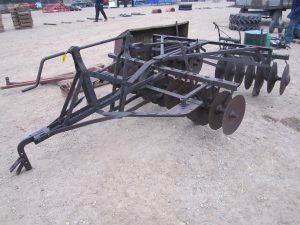 looking to purchase a set of disc harrows for thoroughly pulverising the soil, and cutting up tough sides or boggy land,you could have chosen a set from Scottish as well as English makers.
looking to purchase a set of disc harrows for thoroughly pulverising the soil, and cutting up tough sides or boggy land,you could have chosen a set from Scottish as well as English makers.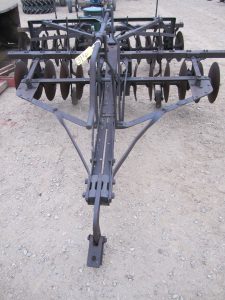 W. Pollock, Implement Works, Mauchline. It made two models of disc harrows: tractor drawn with 24×18 inch diameter discs; and tractor drawn with 28018 inch diameter discs.
W. Pollock, Implement Works, Mauchline. It made two models of disc harrows: tractor drawn with 24×18 inch diameter discs; and tractor drawn with 28018 inch diameter discs. 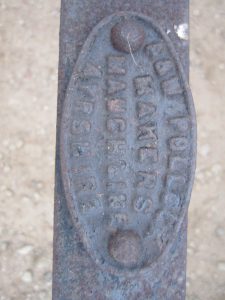 Ltd, Ipswich., and Walter A. Wood Co. Ltd, Horsham, Sussex. Of these makers, Ransomes Sims & Jefferies had the widest range, for both animals and tractors. Its tractor drawn ones included 6 ft 8 in wide ones with 24, 28, 32 18-inch diameter double discs.
Ltd, Ipswich., and Walter A. Wood Co. Ltd, Horsham, Sussex. Of these makers, Ransomes Sims & Jefferies had the widest range, for both animals and tractors. Its tractor drawn ones included 6 ft 8 in wide ones with 24, 28, 32 18-inch diameter double discs.